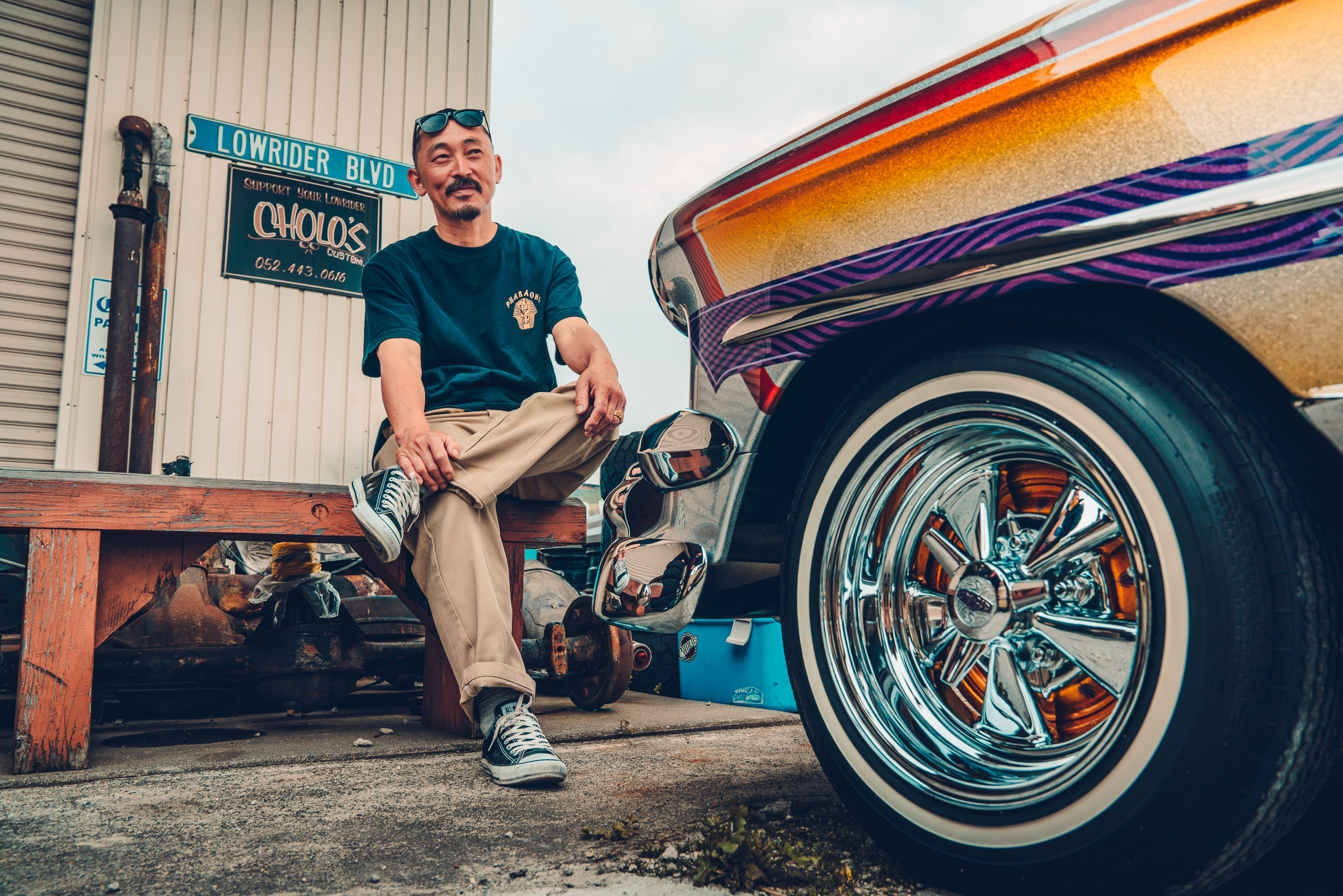Chicano Subculture in Japan
Did you know that in Japan there is a whole Chicano subculture that is thriving, inspired by the Mexican-Americans? The origin of Chicano culture comes from Mexican Americans, who began the Chicano movement in the 1960s as a symbol of pride. This movement was created to resist and repel oppression and discrimination in the community. Today the term is used to represent the Mexican-American community's sense of pride and hope. The culture is also known for its hip-hop, lowriders, graffiti art, language, and poetry (Gallardo). So how did people from Japan adopt the culture?

During the 1980s, two filmmakers, Louis Ellison and Jacob Hodgkinson made a documentary about Chicano culture. The documentary showed that Japanese people were inspired by Lowrider Magazine, a magazine that depicted Chicano's art, fashion, music, cars, and way of life. The magazine was brought to the Japanese audience through Shin Miyata, owner of Barrio Gold Records. The Japanese people fell in love with how they were able to make a statement of independence and political opinions through their music, fashion, cars, and art (Reveron). This also raises the question, can this be considered cultural appropriation? Firstly, what is cultural appropriation? This term refers to when members of a majority group adopt cultural elements of a minority group that come off as disrespectful, exploitative, and stereotypical.
In “How My Southeast LA culture got to Japan”, Thompson-Hernandez travels to Japan to investigate whether or not the Japanese people are appropriating Chicano culture. He expected the people to disregard the original community, but they fully immersed themselves in it and were in constant communication with Lowrider communities in California (Thompson-Hernandez). The Japanese Chicano community took time to learn and appreciate the culture and those who created it. The women in the culture expressed that the subculture helped them rebel against submissive roles in Asia. They love that Chicana women represent rebellion, strength, and boldness(Ulloa).
 However, when a member of the culture was asked if she was nervous about imitating a specific style of tattoo art that Chicanos are known for having. She replied, “To me, it is a design pattern… Just like people overseas get tattoos of Kanji characters, it looks cool.” Others also chose to make shrines dedicated to the Virgin Mary and La Virgenicita, when asked if they were Catholic, they responded “no” but they liked the symbolism and statement behind the image (Ulloa). Although they make an effort to appreciate the culture, the certain fashion and style that they choose displays the culture as violent and gang-affiliated. Still, most Mexican-Americans say they have no problem and appreciate the idea that Japanese people find comfort and feel empowered by their culture. So is it cultural appropriation? The answer is, that it's complicated and many feel differently about the subculture in Japan.
However, when a member of the culture was asked if she was nervous about imitating a specific style of tattoo art that Chicanos are known for having. She replied, “To me, it is a design pattern… Just like people overseas get tattoos of Kanji characters, it looks cool.” Others also chose to make shrines dedicated to the Virgin Mary and La Virgenicita, when asked if they were Catholic, they responded “no” but they liked the symbolism and statement behind the image (Ulloa). Although they make an effort to appreciate the culture, the certain fashion and style that they choose displays the culture as violent and gang-affiliated. Still, most Mexican-Americans say they have no problem and appreciate the idea that Japanese people find comfort and feel empowered by their culture. So is it cultural appropriation? The answer is, that it's complicated and many feel differently about the subculture in Japan.
References Cited:
Gallardo, M. E. (2024a, February 9). Chicano. Encyclopædia Britannica. https://www.britannica.com/topic/Chicano
Reveron, S. (2021, August 6). Japan’s underground Chicano culture. CVLT Nation. https://cvltnation.com/portraitsdocumentary-japans-underground-chicano-culture/
Thompson-hernández, W. (2019, February 19). How my southeast L.A. culture got to Japan. The New York Times. https://www.nytimes.com/2019/02/19/style/how-my-southeast-la-culture-got-to-japan.html
Ulloa, Y. J. (2020, May 8). Japan’s Chicano subculture: Cultural appropriation or appreciation or something in between?Medium. https://medium.com/the-history-philosophy-and-ethics-of-design/japans-chicano-subculture-cultural-appropriation-or-appreciation-or-something-in-between-d3541ae9af85
In “How My Southeast LA culture got to Japan”, Thompson-Hernandez travels to Japan to investigate whether or not the Japanese people are appropriating Chicano culture. He expected the people to disregard the original community, but they fully immersed themselves in it and were in constant communication with Lowrider communities in California (Thompson-Hernandez). The Japanese Chicano community took time to learn and appreciate the culture and those who created it. The women in the culture expressed that the subculture helped them rebel against submissive roles in Asia. They love that Chicana women represent rebellion, strength, and boldness(Ulloa).

References Cited:
Gallardo, M. E. (2024a, February 9). Chicano. Encyclopædia Britannica. https://www.britannica.com/topic/Chicano
Reveron, S. (2021, August 6). Japan’s underground Chicano culture. CVLT Nation. https://cvltnation.com/portraitsdocumentary-japans-underground-chicano-culture/
Thompson-hernández, W. (2019, February 19). How my southeast L.A. culture got to Japan. The New York Times. https://www.nytimes.com/2019/02/19/style/how-my-southeast-la-culture-got-to-japan.html
Ulloa, Y. J. (2020, May 8). Japan’s Chicano subculture: Cultural appropriation or appreciation or something in between?Medium. https://medium.com/the-history-philosophy-and-ethics-of-design/japans-chicano-subculture-cultural-appropriation-or-appreciation-or-something-in-between-d3541ae9af85
It's fascinating to delve into the narrative of Chicano subculture in Japan. Coming from China, I've noticed how Japanese music incorporates a diverse array of influences, with Chicano culture being among them.
ReplyDeleteThis was really a fun read. You captured so much in such a short space. Cultural appropriation versus appreciation is such a great topic and one I am keen to keep learning about.
ReplyDeleteWow, amazing information to learn and I like the style of your blog, great job!
ReplyDeleteThis was such a great read, thank you for sharing this with us!
ReplyDeleteThis was a great blog and read I liked the culture paintings
ReplyDelete